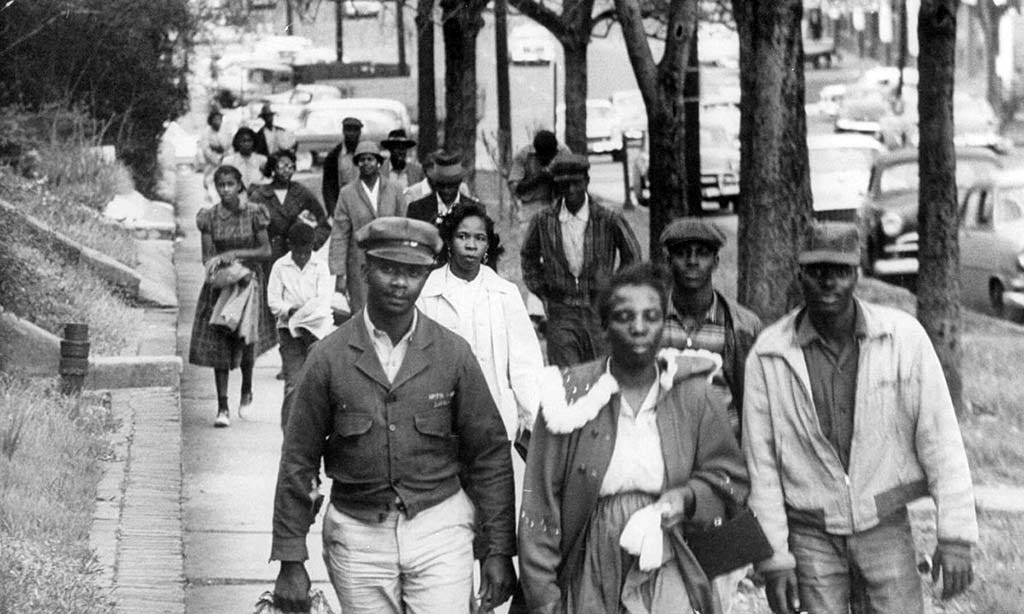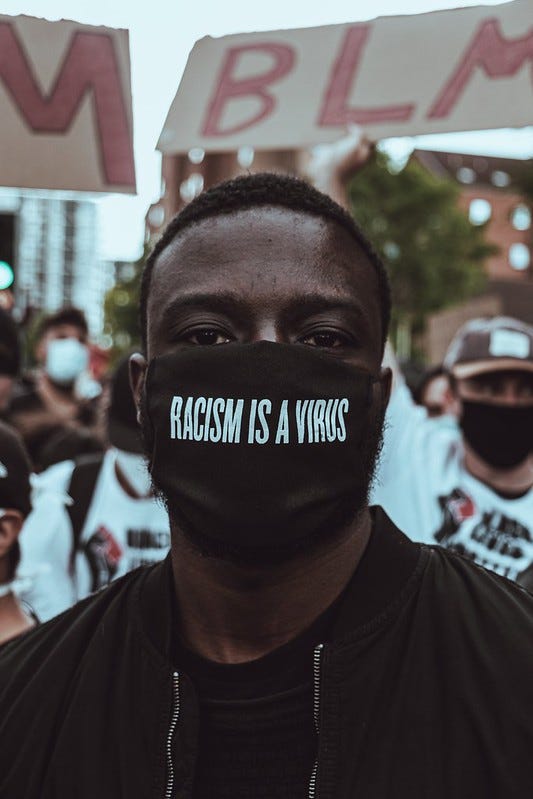381 days.
That’s how long the Montgomery Bus Boycott, the first large-scale action against segregation in the United States, took to achieve its goal. On December 5, 1955, as pretty much every school kid knows, Rosa Parks stayed in her seat. On December 20, 1956, the Supreme Court ruled that segregating public buses was unconstitutional.

Folks walking to work during the Montgomery Bus Boycott.
28 days.
That’s how long it has been since Derek Chauvin refused to take his knee off of George Floyd’s neck and murdered him in the plain light of day. Since then, there have been uprisings in cities and towns across America, and globally, too. Major thoroughfares have been stopped in their tracks. Confederate statues have been thrown into rivers. Books about racial justice have rocketed up the bestseller list. Black trans women, the most vulnerable of all Americans to state violence, have been centered in marches 15,000 strong. The call, this time around, is for police abolition.

London, 2020. Picture by Joao Pereira, courtesy of Creative Commons
Like the bus boycotts in the mid 1950s, or the uprisings of the late 1960s, Black visionaries are re-imagining the country as it has never been. But this time around, they are joined by an unprecedented number of accomplices.
According to a recent poll: “Two-thirds of U.S. adults say they support the movement, with 38 percent saying they strongly support it. This sentiment is particularly strong among black Americans, although majorities of white (60 percent), Hispanic (77 percent) and Asian (75 percent) Americans express at least some support.”
These uprisings have gone global, which, as Sisonke Msimang points out, proves erroneous the seductive idea that only the cracked melting pot that is America has a “race problem.” “The protesters have successfully framed racism as an existential question rather than simply a matter to be shrugged off,” she writes. “By insisting that Black Lives Matter wherever black people may be, this generation of activists has transformed a local tragedy into a global fight.”
And yet, even as the struggle expands in energy, numbers and geographic reach, there is already a creeping anxiety that this moment will fade and disperse — that some of the newcomers to the movement might gradually begin reverting back to their old unconscious ways, to their socially distanced, soporific summers. People are beginning to ask: How do we sustain this movement? How do we make sure that people — especially those who are new to taking this kind of stand for racial justice — don’t burn out and wander away?
Read the rest here.



